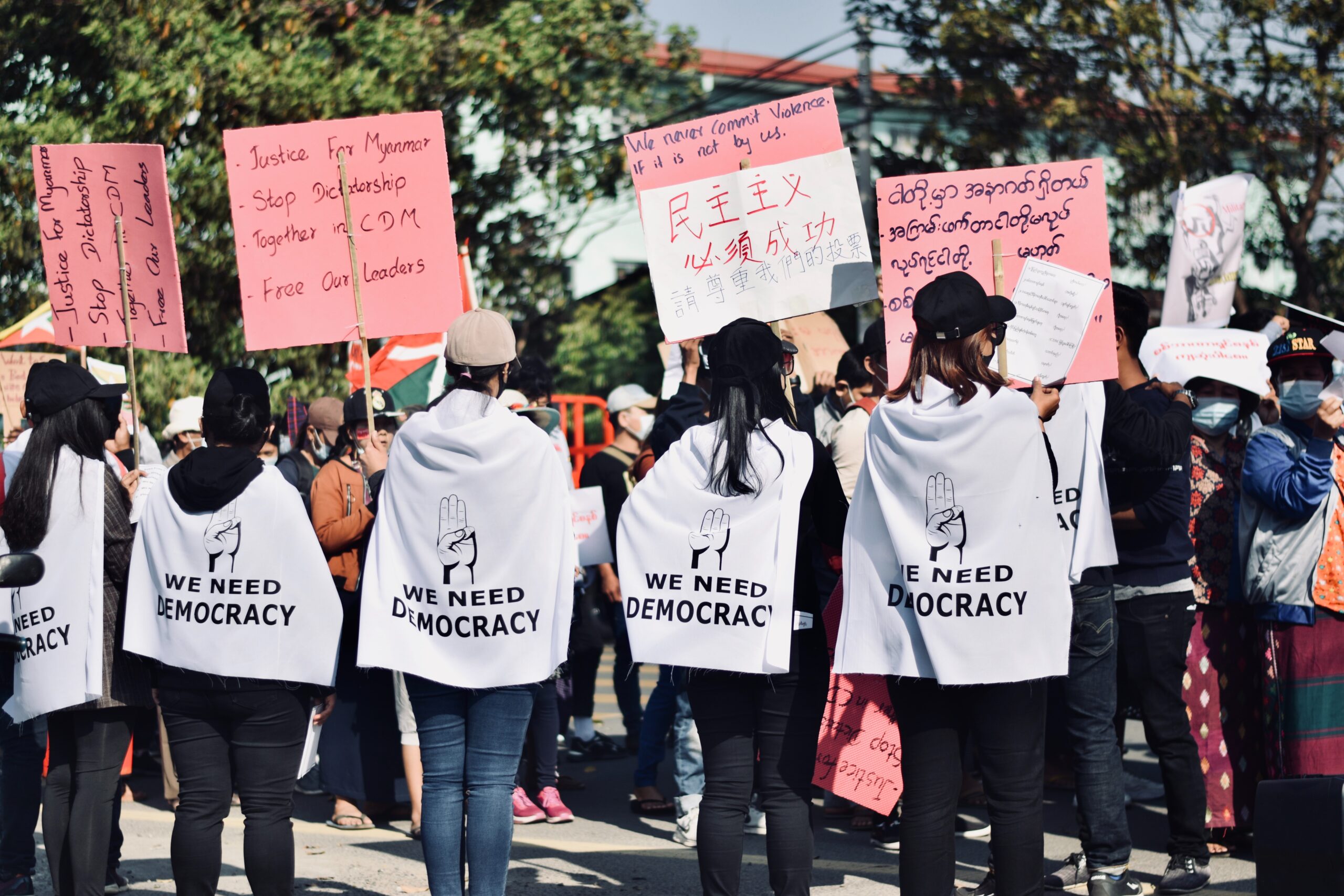By Thanakrit Thongfa and Vriya Tepphuviang*
Photos: Thanakrit Thongfa
Today in Bangkok, the National Human Rights Commission of Thailand is holding a seminar on Thai outbound investment that will discuss the Hatgyi Dam. The Hatgyi hydropower project is proposed for the Salween River in Myanmar and is funded by the Electricity Generating Authority of Thailand. Salween communities in Myanmar and Thailand are concerned about the dam’s negative impacts. This was very clear last month at the Salween River Youth Camp.
At the Salween River Youth Camp in late August, young people from diverse communities on both sides of the Salween River on the Myanmar-Thai border came to Tha Ta Fang village in Thailand to learn about dam projects and local ecosystems.
The prospect of building a dam on the Salween River, one of the longest free-flowing rivers in the world, is scary and concerning for ethnic minorities along its banks. It could exacerbate conflicts in Myanmar, possibly leading to human rights violations and mass resettlement. Many ethnic minorities in Myanmar have already faced impacts from armed conflict for a long time, forcing many to leave their homes and some to cross into Thailand as refugees. Faced with problems accessing food, medicine, and education, many people have been unable to learn about dams and their impacts. The Salween River Youth Camp was a unique and incredible chance for youth from Sop Moei, Po Sor and Tha Ta Fang villages, as well as from Ei Thu Hta camp for internally displaced people, to learn about dam projects and how to build campaigns to stop them.
“My dad was killed by the Burmese military, so I moved to Ei Thu Hta. I heard about dams for a long time but I didn’t know much about the projects or how dam building threatens the land we need to live.” Re Re Soe, 17 years old, from Ei Thu Hta refugee camp

Youth at the camp learn about ecosystems and natural resources through games and exchanges.
The participants at the camp learned about ecosystems along in the Salween River through exchanges with one another. They divided into groups to explore topics related to ecosystems in the Salween River. One group shared knowledge about fish, for example, including different species of fish that live in the Salween River and which ones were common to catch. Another group focused on the culture and traditions of communities on both sides of the Salween, while a third documented herbs growing on the communities’ land. They also looked at traditional medicines, including their use of duck blood to heal the sick. The groups shared their findings with each other, helping the youth to recognize the importance of these ecosystems to their communities. Many of them became concerned that, if current plans for dam building continue, there may be nothing left of these ecosystems.
“When I hear about dam projects, I feel like they are an injustice to us. They can’t just declare that we must move and leave our homes – that we must sacrifice for the majority just because we are ethnic minorities. It’s not right. That’s why I need to think: what can we do? How can we fight to stop the dams?” La Hu Toh, 20 years old, from Tha Ta Fang village

Youth at the camp present what they learned from community-based research on ecosystems and livelihoods.
The camp continued as an anti-dam campaigner led the youth in an activity to document local livelihoods and share their findings as storytellers. One group documented the community’s traditional fishing equipment and how they use it, following them through each step in the fishing process. The participants followed the community members, taking pictures of each step. Afterwards, they told the stories of what they learned. Each group also communicated what they learned through a different creative medium: some made photo essays, others designed posters, wrote campaign slogans or practiced writing blog-style reflections.
This process was a unique chance for the youth to slow down and learn from community members. They learned different strategies to show the importance of the Salween for the livelihoods of ethnic minorities on both sides of the Myanmar-Thai border.

Anti-dam campaigner P’Piroj and a boy in Tha Ta Fang practice traditional net fishing.
Finally, this camp helped the Salween youth to see how important their local ecosystems are and to think about how to protect the river and build a good campaign to stop dam projects. This is especially important as youth from these communities often leave to continue their schooling and don’t return, leaving only older generations to fight to stop the dams. The participants in the camp also built relationships and a new youth network connecting each of these communities. The youth want to have more activities like this camp so that new generations can continue the efforts of their elders to stop the dams. As these young people see it, it’s important to protect the Salween River for their descendants and future generations.
“The Salween youth camp made me see the river for the first time: I had heard about dam building just a little bit before, but if they will really build one, we will fight to stop it.” Darakron, 15 years old, from Au Noo village, studying at Baan Po Sor school
*Thanakrit is an Earthrights School alumni and Campaign Fellow at ERI. Variya is a Legal Intern. Both are active in engaging around issues of Thai outbound investment in the Mekong region.

Thanakrit, ERI Campaigns Fellow and blog author, tries net fishing in Tha Ta Fang.






